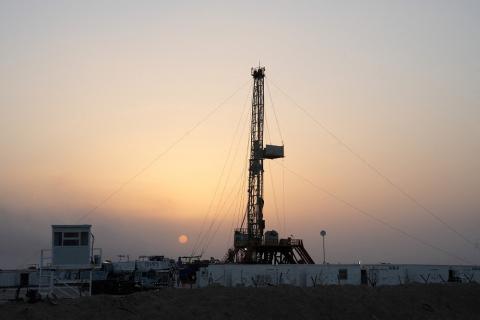
Weakness in oil price reflected a bearish view of the global energy demand’
Economic headwinds are curbing bullish sentiment and fueling oil demand concerns
SINGAPORE: Oil prices largely held steady on Monday, recouping some early losses as investors took stock of global economic pressures that could impact oil demand.
Global benchmark Brent crude oil futures were down 1 cent to $59.41 a barrel by 0648 GMT.
US West Texas Intermediate crude oil futures were off 2 cents at $53.76 a barrel.
Signs of still ample global oil supply combined with concerns about economic growth in China, the world’s largest oil importer, pressured prices lower for a second session earlier on Monday.
“Weakness in oil price reflected a bearish view of the global energy demand, as the slowdown in manufacturing and trades seemed not to be ending anytime soon,” said Margaret Yang, market analyst at CMC Markets.
Russia, the world’s second-largest oil producer, said on Sunday it did not meet its supply reduction commitment in September because of an increase in natural gas condensate output as the country prepared for winter.
The Organization of the Petroleum Exporting Countries (OPEC), Russia and other oil producers, an alliance known as OPEC+, agreed in December to reduce supply by 1.2 million barrels per day (bpd) from the start of this year.
Additionally, talks between OPEC members Kuwait and Saudi Arabia to restart oil production from joint fields in the Neutral Zone between the two countries, with capacity of 500,000 barrels per day could mean more supply returning to the market.
Kuwait’s deputy foreign minister on Saturday said negotiations were “very positive” after Kuwaiti media, citing unidentified sources, said the two Gulf oil producers had agreed to resume crude output from the oilfields.
But any increase in Neutral Zone production from will be compensated by a supply cut from other Saudi Arabian and Kuwaiti fields as both countries are committed to their targets under the OPEC+ output reduction agreement.
While market participants believe OPEC+ could decide to extend production cuts in an upcoming December meeting, economic headwinds are curbing bullish sentiment and fueling oil demand concerns.
China’s economic growth slowed to 6 percent year-on-year in the third quarter, its weakest in 27-1/2 years and short of expectations due to soft factory production and continuing trade tensions.
“OPEC-led supply curtailment policies though lending support has struggled to boost oil prices as markets fixate over persistent demand-side concerns,” Phillip Futures analyst Benjamin Lu said.
Still, a 9.4 percent year on year increase in China’s refinery throughput for September signaled that petroleum demand remained robust.












